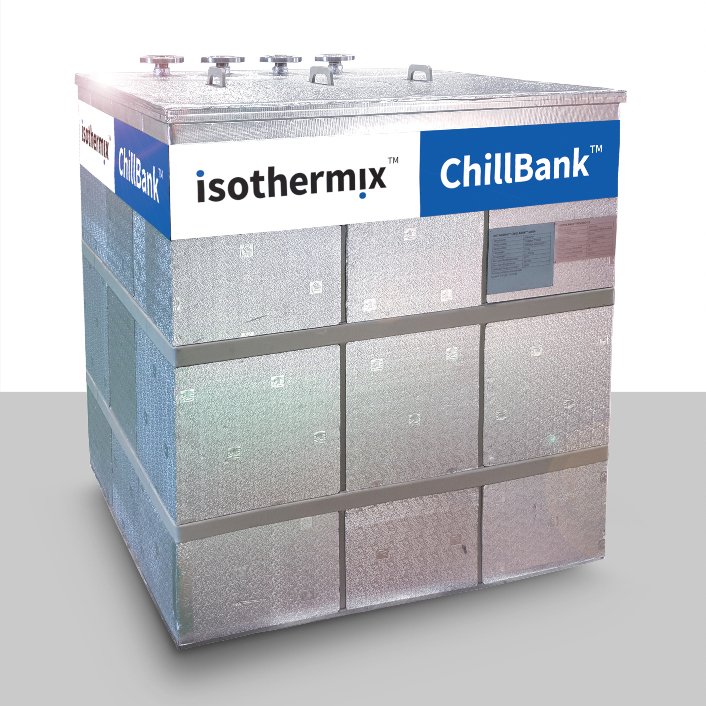How it Works
Cooling
Point 1: Chilled water is produced by the chiller and circulated to the air handling unit (AHU).
Point 2: The AHU provides space cooling to the building and the resulting warmer water returns to the ChillBank inlet.
Point 3: The ChillBank heat exchanger is submerged within a patented material that melts at a precise preselected temperature.
Point 4: ChillBank progressively cools the return water to the melting point as it passes through the proprietary heat exchanger.
Point 5: The chiller receives pre-cooled return water at the melting point of the material and thus reduces the load on the Chiller.
What is a PCM?
PCM stands for Phase Change Material, meaning a material which undergoes a phase change from liquid to solid at a temperature that allows for convenient storage of latent heat, either for cooling or for heating. This allows for the storage of thermal energy at a density vastly higher than sensible heat storage.
For example, 333 KiloJoules of heat are needed to melt one kilogram of water, raising the temperature from 0 to I degree. The next 333 KiloJoules of heat applied will raise the heat of the same kilogram of water from 0 to 80 degrees, as the sensible heat of water is 4.2 KiloJoules/gram.
The oldest PCM used in building air conditioning is, indeed, ice. However, cooling to -5 degrees Celsius to produce ice is highly inefficient, with the Coefficient of Performance (COP), or the ratio of heat transferred to electricity consumed, typically being less than 1.

Using Phase Change Materials (PCMs)


ChillBank™ offers versatile and modular configuration of thermal storage over a wide range of temperatures and storage capacities. No matter the storage size or storage temperature, ChillBank™ is designed to provide rapid delivery of thermal energy on demand.
BENEFITS
Shifts peak load to off-peak
Operating energy & cost savings through
• operational efficiencies through optimizing chiller performance
• allows operation of the chiller when COP is available
• Chiller operates at optimum load through shifting operations for greater COPCapital cost savings through
• reduced chiller and cooling tower sizing; and
• less space needed for peak load buffer - fraction of volume of chilled water storage.Integrates with
• your existing or planned chilled beam system; or
• can pre-cool water to chiller for supply to air handling units.Reduces greenhouse gas emissions.
In most cases the thermal battery will pay for itself immediately through capital cost reductions by eliminating a portion of the chiller required. Twice as efficient as conventional thermal ice storage technology.

Product Specification
Technical Data Sheet and Product Specification available upon request.
Performance Benefits
50% or more reduction in CAPEX requirement.
10% or more reduction in electricity consumption.
30% or more reduction in expenditure on electricity.
$250 or more savings on value of floor space per kWh storage capacity.
Remove gas and efficiently store renewables.
Lop peak load by 40% or more.

Curious how ChillBank™ could benefit you?
Let’s talk about what we can do for your business and industry.

